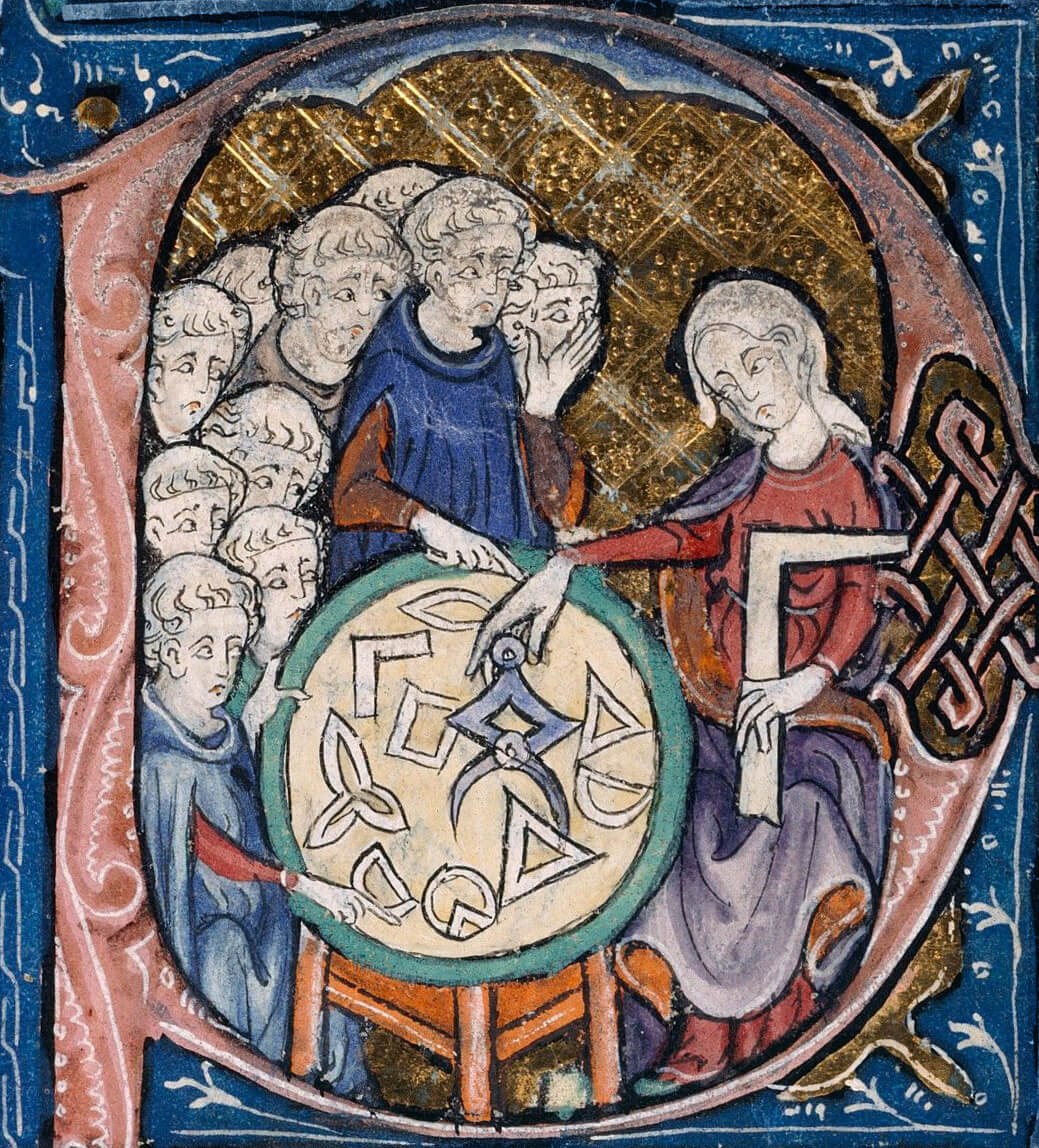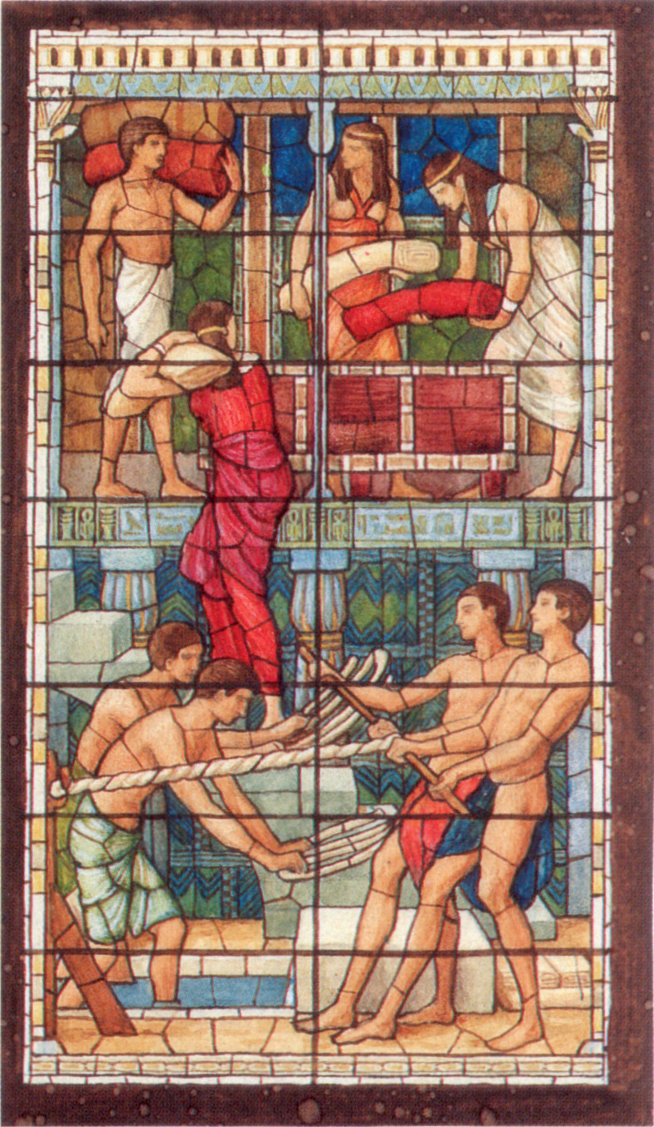|
Pseudosphere
In geometry, a pseudosphere is a surface with constant negative Gaussian curvature. A pseudosphere of radius is a surface in \mathbb^3 having Gaussian curvature, curvature −1/''R''2 at each point. Its name comes from the analogy with the sphere of radius , which is a surface of curvature 1/''R''2. The term was introduced by Eugenio Beltrami in his 1868 paper on models of hyperbolic geometry. __TOC__ Tractroid The same surface can be also described as the result of surface of revolution, revolving a tractrix about its asymptote. For this reason the pseudosphere is also called a tractroid. As an example, the (half) pseudosphere (with radius 1) is the surface of revolution of the tractrix parametrized by : t \mapsto \left( t - \tanh t, \operatorname\,t \right), \quad \quad 0 \le t < \infty. It is a Mathematical singularity, singular space (the equator is a singularity), but away from the singularities, it has constant negative Gaussian curvature and therefore is locall ... [...More Info...] [...Related Items...] OR: [Wikipedia] [Google] [Baidu] |
Eugenio Beltrami
Eugenio Beltrami (16 November 1835 – 18 February 1900) was an Italian mathematician notable for his work concerning differential geometry and mathematical physics. His work was noted especially for clarity of exposition. He was the first to prove consistency of non-Euclidean geometry by modeling it on a surface of constant curvature, the pseudosphere, and in the interior of an ''n''-dimensional unit sphere, the so-called Beltrami–Klein model. He also developed singular value decomposition for matrices, which has been subsequently rediscovered several times. Beltrami's use of differential calculus for problems of mathematical physics indirectly influenced development of tensor calculus by Gregorio Ricci-Curbastro and Tullio Levi-Civita. Life Beltrami was born in 1835 in Cremona (Lombardy), then a part of the Austrian Empire, and now part of Italy. Both parents were artists Giovanni Beltrami and the Venetian Elisa Barozzi. He began studying mathematics at University ... [...More Info...] [...Related Items...] OR: [Wikipedia] [Google] [Baidu] |
Hyperbolic Geometry
In mathematics, hyperbolic geometry (also called Lobachevskian geometry or János Bolyai, Bolyai–Nikolai Lobachevsky, Lobachevskian geometry) is a non-Euclidean geometry. The parallel postulate of Euclidean geometry is replaced with: :For any given line ''R'' and point ''P'' not on ''R'', in the plane containing both line ''R'' and point ''P'' there are at least two distinct lines through ''P'' that do not intersect ''R''. (Compare the above with Playfair's axiom, the modern version of Euclid's parallel postulate.) The hyperbolic plane is a plane (mathematics), plane where every point is a saddle point. Hyperbolic plane geometry is also the geometry of pseudosphere, pseudospherical surfaces, surfaces with a constant negative Gaussian curvature. Saddle surfaces have negative Gaussian curvature in at least some regions, where they local property, locally resemble the hyperbolic plane. The hyperboloid model of hyperbolic geometry provides a representation of event (relativity ... [...More Info...] [...Related Items...] OR: [Wikipedia] [Google] [Baidu] |
Tractrix
In geometry, a tractrix (; plural: tractrices) is the curve along which an object moves, under the influence of friction, when pulled on a horizontal plane by a line segment attached to a pulling point (the ''tractor'') that moves at a right angle to the initial line between the object and the puller at an infinitesimal speed. It is therefore a curve of pursuit. It was first introduced by Claude Perrault in 1670, and later studied by Isaac Newton (1676) and Christiaan Huygens (1693). Mathematical derivation Suppose the object is placed at and the puller at the origin, so that is the length of the pulling thread. (In the example shown to the right, the value of is 4.) Suppose the puller starts to move along the axis in the positive direction. At every moment, the thread will be tangent to the curve described by the object, so that it becomes completely determined by the movement of the puller. Mathematically, if the coordinates of the object are , then by the Pythagorean the ... [...More Info...] [...Related Items...] OR: [Wikipedia] [Google] [Baidu] |
Gaussian Curvature
In differential geometry, the Gaussian curvature or Gauss curvature of a smooth Surface (topology), surface in three-dimensional space at a point is the product of the principal curvatures, and , at the given point: K = \kappa_1 \kappa_2. For example, a sphere of radius has Gaussian curvature everywhere, and a flat plane and a cylinder have Gaussian curvature zero everywhere. The Gaussian curvature can also be negative, as in the case of a hyperboloid or the inside of a torus. Gaussian curvature is an ''intrinsic'' measure of curvature, meaning that it could in principle be measured by a 2-dimensional being living entirely within the surface, because it depends only on distances that are measured “within” or along the surface, not on the way it is isometrically embedding, embedded in Euclidean space. This is the content of the ''Theorema Egregium''. Gaussian curvature is named after Carl Friedrich Gauss, who published the ''Theorema Egregium'' in 1827. Informal definit ... [...More Info...] [...Related Items...] OR: [Wikipedia] [Google] [Baidu] |
Sphere
A sphere (from Ancient Greek, Greek , ) is a surface (mathematics), surface analogous to the circle, a curve. In solid geometry, a sphere is the Locus (mathematics), set of points that are all at the same distance from a given point in three-dimensional space.. That given point is the center (geometry), ''center'' of the sphere, and the distance is the sphere's ''radius''. The earliest known mentions of spheres appear in the work of the Greek mathematics, ancient Greek mathematicians. The sphere is a fundamental surface in many fields of mathematics. Spheres and nearly-spherical shapes also appear in nature and industry. Bubble (physics), Bubbles such as soap bubbles take a spherical shape in equilibrium. The Earth is spherical Earth, often approximated as a sphere in geography, and the celestial sphere is an important concept in astronomy. Manufactured items including pressure vessels and most curved mirrors and lenses are based on spheres. Spheres rolling, roll smoothly in ... [...More Info...] [...Related Items...] OR: [Wikipedia] [Google] [Baidu] |
Geometry
Geometry (; ) is a branch of mathematics concerned with properties of space such as the distance, shape, size, and relative position of figures. Geometry is, along with arithmetic, one of the oldest branches of mathematics. A mathematician who works in the field of geometry is called a ''List of geometers, geometer''. Until the 19th century, geometry was almost exclusively devoted to Euclidean geometry, which includes the notions of point (geometry), point, line (geometry), line, plane (geometry), plane, distance, angle, surface (mathematics), surface, and curve, as fundamental concepts. Originally developed to model the physical world, geometry has applications in almost all sciences, and also in art, architecture, and other activities that are related to graphics. Geometry also has applications in areas of mathematics that are apparently unrelated. For example, methods of algebraic geometry are fundamental in Wiles's proof of Fermat's Last Theorem, Wiles's proof of Fermat's ... [...More Info...] [...Related Items...] OR: [Wikipedia] [Google] [Baidu] |
Pedagogy
Pedagogy (), most commonly understood as the approach to teaching, is the theory and practice of learning, and how this process influences, and is influenced by, the social, political, and psychological development of learners. Pedagogy, taken as an academic discipline, is the study of how knowledge and skills are imparted in an educational context, and it considers the interactions that take place during learning. Both the theory and practice of pedagogy vary greatly as they reflect different social, political, and cultural contexts. Pedagogy is often described as the act of teaching. The pedagogy adopted by teachers shapes their actions, judgments, and teaching strategies by taking into consideration theories of learning, understandings of students and their needs, and the backgrounds and interests of individual students. Its aims may range from furthering liberal education (the general development of human potential) to the narrower specifics of vocational education (the i ... [...More Info...] [...Related Items...] OR: [Wikipedia] [Google] [Baidu] |
Volume
Volume is a measure of regions in three-dimensional space. It is often quantified numerically using SI derived units (such as the cubic metre and litre) or by various imperial or US customary units (such as the gallon, quart, cubic inch). The definition of length and height (cubed) is interrelated with volume. The volume of a container is generally understood to be the capacity of the container; i.e., the amount of fluid (gas or liquid) that the container could hold, rather than the amount of space the container itself displaces. By metonymy, the term "volume" sometimes is used to refer to the corresponding region (e.g., bounding volume). In ancient times, volume was measured using similar-shaped natural containers. Later on, standardized containers were used. Some simple three-dimensional shapes can have their volume easily calculated using arithmetic formulas. Volumes of more complicated shapes can be calculated with integral calculus if a formula exists for the shape ... [...More Info...] [...Related Items...] OR: [Wikipedia] [Google] [Baidu] |
Fabric Arts
Textile arts are arts and crafts that use plant, animal, or synthetic fibers to construct practical or decorative objects. Textiles have been a fundamental part of human life since the beginning of civilization. The methods and materials used to make them have expanded enormously, while the functions of textiles have remained the same, there are many functions for textiles. Whether it be clothing or something decorative for the house/shelter. The history of textile arts is also the history of international trade. Tyrian purple dye was an important trade good in the ancient Mediterranean. The Silk Road brought Chinese silk to India, Africa, and Europe, and, conversely, Sogdian silk to China. Tastes for imported luxury fabrics led to sumptuary laws during the Middle Ages and Renaissance. The Industrial Revolution was shaped largely by innovation in textiles technology: the cotton gin, the spinning jenny, and the power loom mechanized production and led to the Luddite rebell ... [...More Info...] [...Related Items...] OR: [Wikipedia] [Google] [Baidu] |
Horocycle
In hyperbolic geometry, a horocycle ( from Greek roots meaning "boundary circle"), sometimes called an oricycle or limit circle, is a curve of constant curvature where all the perpendicular geodesics ( normals) through a point on a horocycle are limiting parallel, and all converge asymptotically to a single ideal point called the '' centre'' of the horocycle. In some models of hyperbolic geometry, it looks like the two "ends" of a horocycle get closer and closer to each other and closer to its centre, but this is not true; the two "ends" of a horocycle get further and further away from each other and stay at an infinite distance off its centre. A horosphere is the 3-dimensional version of a horocycle. In Euclidean space, all curves of constant curvature are either straight lines (geodesics) or circles, but in a hyperbolic space of sectional curvature -1, the curves of constant curvature come in four types: geodesics with curvature \kappa = 0, hypercycles with curvature 0 ... [...More Info...] [...Related Items...] OR: [Wikipedia] [Google] [Baidu] |
Geodesics On The Pseudosphere And Three Other Models Of Hyperbolic Geometry
In geometry, a geodesic () is a curve representing in some sense the locally shortest path ( arc) between two points in a surface, or more generally in a Riemannian manifold. The term also has meaning in any differentiable manifold with a connection. It is a generalization of the notion of a "straight line". The noun ''geodesic'' and the adjective ''geodetic'' come from ''geodesy'', the science of measuring the size and shape of Earth, though many of the underlying principles can be applied to any ellipsoidal geometry. In the original sense, a geodesic was the shortest route between two points on the Earth's surface. For a spherical Earth, it is a segment of a great circle (see also great-circle distance). The term has since been generalized to more abstract mathematical spaces; for example, in graph theory, one might consider a geodesic between two vertices/nodes of a graph. In a Riemannian manifold or submanifold, geodesics are characterised by the property of having vanis ... [...More Info...] [...Related Items...] OR: [Wikipedia] [Google] [Baidu] |





